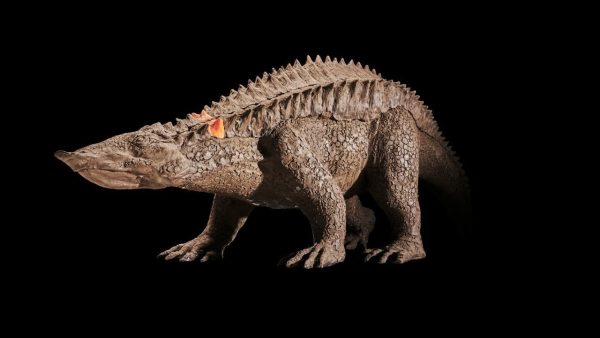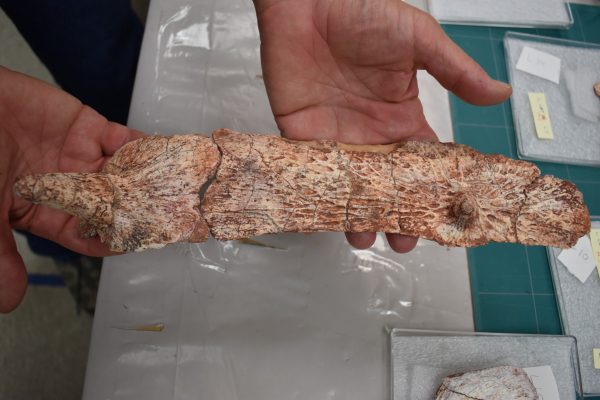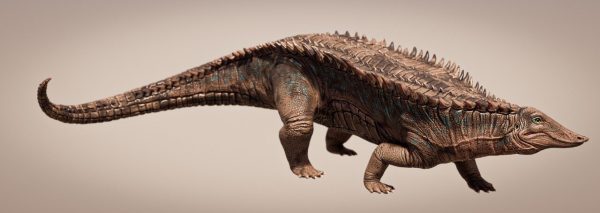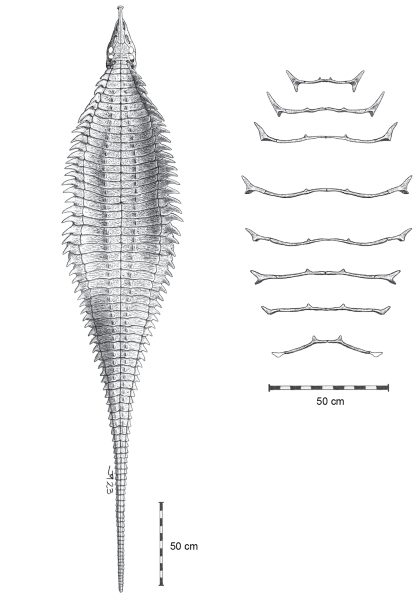In 1989, a fossil discovered in Texas was confirmed as a new species of aetosaur, a large armored reptile akin to a cousin of the crocodile that thrived during the late Triassic period.

This newly identified creature, named Garzapelta muelleri, was uncovered in the Cooper Canyon Formation in northwestern Texas. Aetosaurs, like Garzapelta muelleri, were formidable creatures measuring up to 16 feet (5 meters) in length, complete with bony plates known as osteoderms for protection.
Described as the “tanks of the Triassic” by The University of Texas at Austin, these stout-limbed reptiles were equipped with a robust exterior for defense.

Lead author William Reyes, a doctoral student at The University of Texas at Austin, highlighted the significance of the discovered fossil. He mentioned that the team was able to retrieve a substantial portion of the animal’s dorsal carapace, extending from the neck and shoulder area to the tail’s a rare find that provides valuable insights into the anatomy of these ancient creatures.

Aetosaurs such as Garzapelta muelleri roamed the Earth during the late Triassic period, spanning 237 to 201 million years ago. Unlike modern carnivorous crocodiles, aetosaurs were primarily omnivores, showcasing a diverse diet compared to their present-day relatives.

The fossil, initially discovered in 1989 by late paleontologist Bill Mueller and amateur collector Emmett Shedd, stood out due to its unique characteristics. With a blend of bony plates never seen before, Garzapelta muelleri posed a puzzle regarding its placement on the aetosaur family tree.

Although most aetosaurs fall into distinct groups known as Aetosaurinae and Stagonolepidoidea, Garzapelta muelleri displayed a mix of traits resembling different aetosaur genera. The team suggested that the species had closer affinities with Aetosaurinae overall, while its distinctive spikes likely evolved independently through a convergent evolution process where unrelated species developed similar features.

In unveiling Garzapelta muelleri, scientists have shed light on the intricate evolutionary paths of ancient reptiles and the fascinating adaptations that shaped their existence during the Triassic era. This remarkable discovery adds a new layer to our understanding of the diverse prehistoric fauna that once inhabited our planet.





